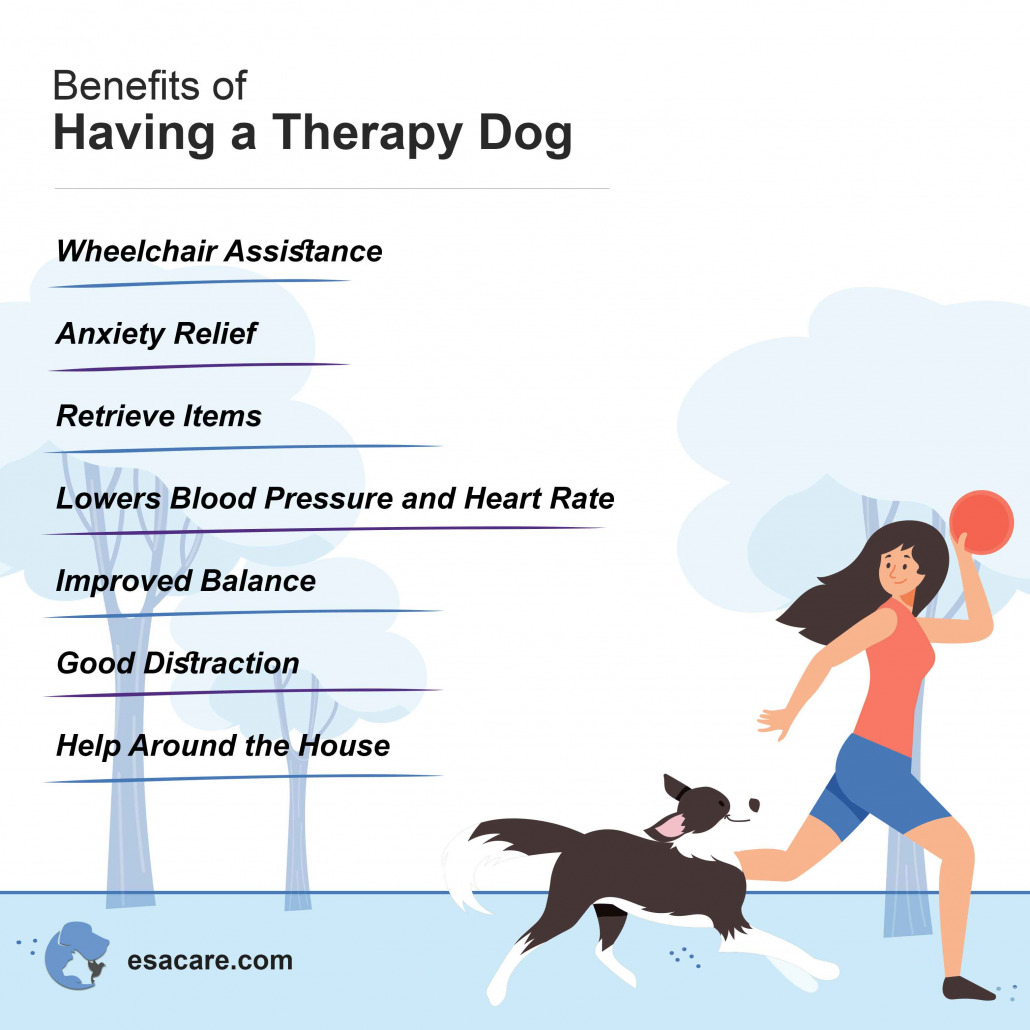To train a therapy dog at home, establish a consistent routine and use positive reinforcement techniques. Begin training sessions in a calm environment.
Introducing a therapy dog into your home can provide comfort and support to individuals in need. Training your dog to be a therapy animal at home can be a rewarding experience that strengthens the bond between you and your canine companion.
By following structured training sessions and using positive reinforcement methods, you can teach your dog the necessary skills and behaviors to excel as a therapy dog. In this guide, we will explore effective strategies for training a therapy dog at home, helping you create a positive and enriching environment for both your dog and those who will benefit from its therapeutic presence.
Choosing The Right Dog Breed
When choosing a therapy dog, it’s important to consider your lifestyle. Make sure the breed matches your activity level. Temperament and personality traits are crucial factors to assess. Look for dogs with calm and friendly demeanor.

Credit: esacare.com
Understanding Basic Training Principles
Training a therapy dog at home requires understanding the basic principles of positive reinforcement, consistency, and patience. Positive reinforcement is a key technique, which involves rewarding the dog for desired behaviors such as sitting, staying, or following commands. Consistency is important in establishing a routine and sticking to it, as dogs thrive on structure. Patience is crucial, as each dog learns at its own pace.
Avoid punishment or negative reinforcement, as it can create fear or anxiety in the dog, hindering their progress. Use rewards such as treats, praise, or playtime to motivate and reinforce good behavior. It is important to maintain a calm and positive environment, making training sessions enjoyable for both the dog and the trainer. Remember, training a therapy dog takes time and dedication, but the bond formed with your furry friend is priceless.
Socialization And Exposure
|
Training a therapy dog can be done at home with socialization and exposure. Introduce your dog to various environments to build confidence. Interact with different people and animals to enhance social skills. |
Basic Obedience Training
Training a therapy dog at home is a rewarding journey that requires patience and consistency. Basic obedience training is essential for a therapy dog, as it helps to create a strong bond between the dog and the handler. Teaching commands such as sit, stay, and come is a great starting point. To teach the sit command, hold a treat close to the dog’s nose and slowly lift it upwards, causing the dog to sit naturally.
Reward the dog with the treat and praise. For the stay command, ask the dog to sit, then hold your hand up as a stop signal and take a few steps back. Gradually increase the distance and duration of the stay. The command is taught by calling the dog’s name and using an enthusiastic tone, followed by a reward for coming to you. Consistent practice and positive reinforcement are key to successful training results.
Walking on a leash is another important skill for therapy dogs. Start by introducing the dog to a leash and gradually get them comfortable wearing it. Begin walking with a loose leash and reward the dog for walking calmly beside you. Use treats or toys to keep their attention focused on you during walks. If the dog pulls on the leash, stop walking and wait for them to return to your side before continuing.
This teaches them that pulling does not get them where they want to go. With practice, the dog will learn to walk politely on a leash, making therapy visits much more enjoyable for everyone involved.
Specialized Therapy Training
Training a therapy dog at home can be a rewarding experience. One important aspect is the specialized therapy training required. This includes emotional support conditioning and specific service tasks. During training, patience and consistency are key. Building trust and establishing clear communication are crucial for success.
Using positive reinforcement techniques and understanding your dog’s individual needs are essential factors. Every step of training should be approached with care and understanding. With dedication and effort, you can shape your dog into an invaluable therapy companion.
Handling Distractions And Stressors
Training a therapy dog at home requires effective handling of distractions and stressors. Desensitization techniques are an essential part of this process, helping the dog become accustomed to various stimuli gradually. Coping with unpredictable situations is another critical aspect, as it prepares the dog to remain calm and focused in challenging environments.
When exposed to distractions, using positive reinforcement and patience can significantly improve the dog’s ability to stay composed and responsive. It’s important to create a consistent training environment and gradually increase the difficulty level to build resilience and adaptability.
Legal And Ethical Considerations
Understanding laws and regulations is crucial for training a therapy dog at home. Respecting boundaries and consent of individuals is equally important to ensure ethical practices.
Maintaining The Dog’s Well-being
Maintaining the Dog’s Well-being:
Physical Health and Exercise: Regular exercise is crucial for keeping your therapy dog healthy. Engage in activities like brisk walks or jogs to promote cardiovascular fitness. Varying the intensity and duration of exercise will prevent boredom and stimulate their mind. A balanced diet with adequate protein, carbohydrates, and fats will provide the necessary nutrients to support their energy levels and overall well-being. Additionally, scheduling routine check-ups with a veterinarian ensures any potential health issues or vaccinations are addressed promptly.
Emotional and Mental Care: Therapy dogs need sufficient mental stimulation to prevent boredom or anxiety. Interactive toys and puzzle games can keep their minds engaged. Regular socialization with humans and other animals is essential to develop their social skills. Positive reinforcement training techniques like clicker training can help build trust and strengthen the bond between you and your therapy dog. Finally, offering a safe and comfortable environment that includes a cozy bed, designated play area, and quiet spaces for relaxation will contribute to their emotional well-being.
Frequently Asked Questions
Can You Train Your Dog To Be A Therapy Dog At Home?
Yes, with proper training and socialization, you can train your dog to be a therapy dog at home. However, it’s essential to follow the required certification process.
How Long Does It Take To Train A Dog To Be A Therapy Dog?
Training a dog to be a therapy dog typically takes 1 to 2 years. Factors like the dog’s breed, age, and previous training can affect the duration. Consistent training, socialization, and obedience are vital for successful therapy dog certification.
What Is The Best Age To Train A Therapy Dog?
The best age to train a therapy dog is between 1-2 years old. Early training helps with socialization skills and adaptability.
Does My Dog Have The Temperament To Be A Therapy Dog?
Yes, your dog’s temperament is crucial for being a therapy dog. A calm, friendly, and patient personality is needed. Training and certification can help determine if your dog is suitable for therapy work.
Conclusion
In caring for a therapy dog, consistency and patience are key. Remember to reinforce positive behavior and use rewards for motivation. Building a strong bond with your dog is essential for successful training. Stay positive, keep practicing, and enjoy the journey of training your therapy dog at home.

Hello, I’m Ethan Mitchell. My passion is dog training and behavior enthusiasts. With years of experience working with various breeds, my goal at Dog Advisor Pro is to help dog owners build strong, loving relationships with their furry friends through effective training techniques. Understanding a dog’s behavior is the key to harmonious companionship. I am dedicated to sharing practical training tips that improve the lives of dogs and their owners.


